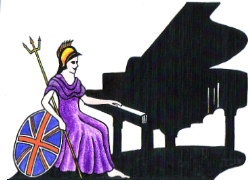Teachers, Accompanists and Piano Entertainers in the UK

UK Piano Page

1 Queen Street
Horsham, West Sussex RH13 5AA
England
The Horsham Piano Centre was established in 1980
Central Arcade
Newcastle upon Tyne, Tyne and Wear NE1 5BP
England
JG Windows Ltd is one the UK's longest established
28 Stamford New Road
Altrincham, Cheshire WA14 1EJ
England
If you are not near to a Dawsons store, you can
30 Pepper Street
Chester, Cheshire CH1 1DF
England
We supply all styles of Acoustic Piano, from
Unit 2, Crown Centre
Bond Street
Macclesfield, Cheshire SK11 6QS
England
Offers a hand-picked selection of prestigious
Music Festival for performers and guests Our 10th
18-06-2022 12:30PM
The Morecambe Bay Piano Group was set up to extend
11-12-2021 01:00PM
The Morecambe Bay Piano Group was set up to extend
08-01-2022 01:00PM
The Morecambe Bay Piano Group was set up to extend
12-02-2022 01:00PM